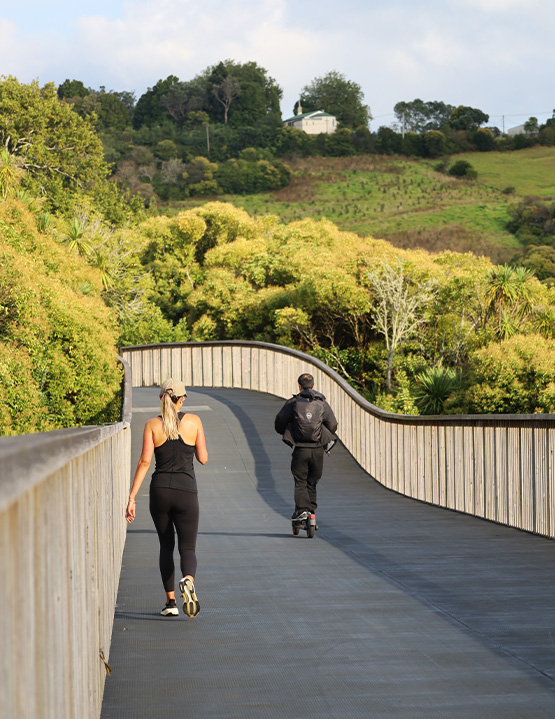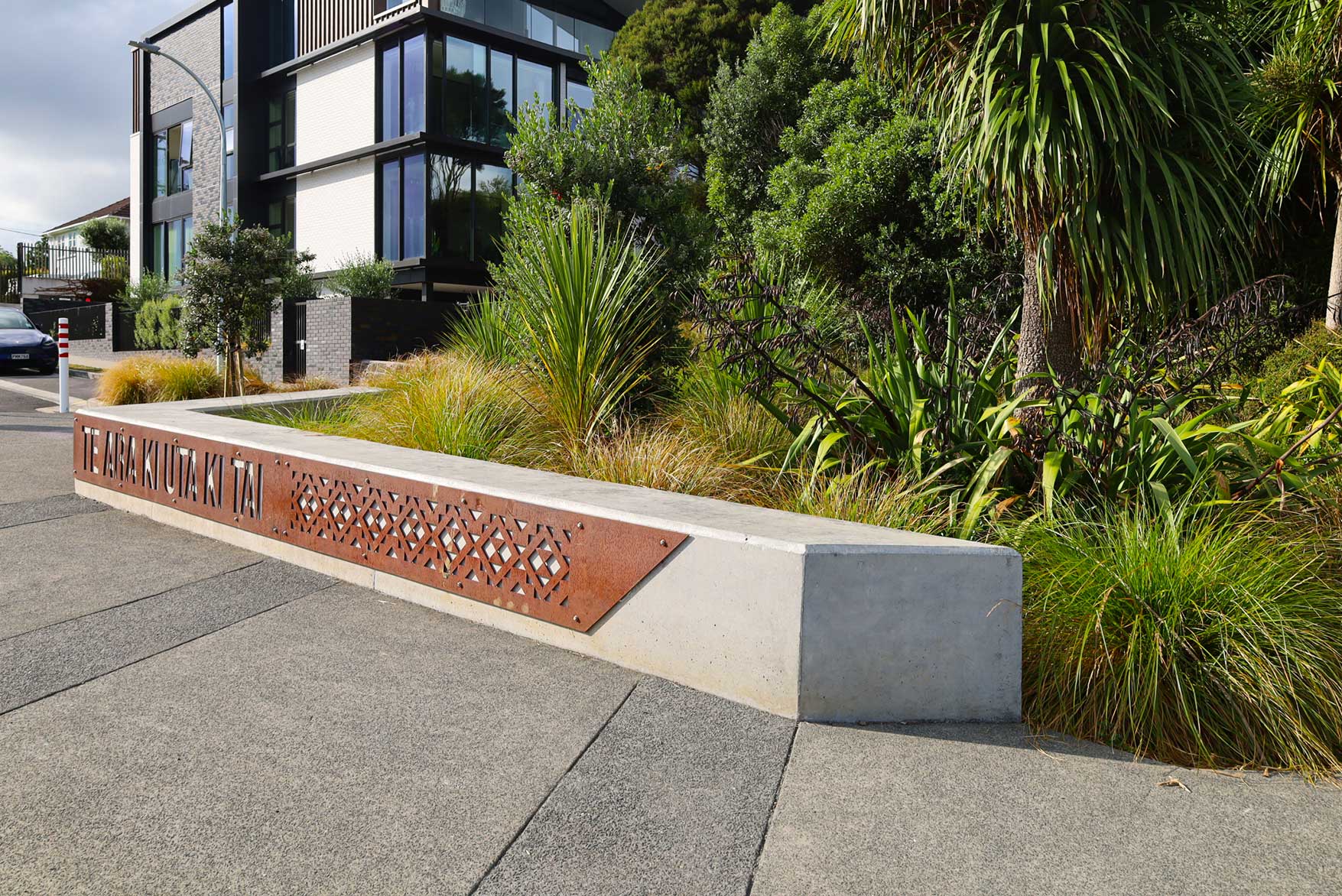The project area includes an extensive Significant Ecological Area (SEA) that involve proactive community groups working to restore these environments. An ecological restoration plan included over five hectares of planting throughout Pourewa Valley, Tahapa Reserves, the Kiwirail corridor, and the Purewa cemetery.
The overarching design was guided by the Urban Design and Cultural Landscape Framework (UDCLF) developed with the Auckland Transport mana whenua advisory group. Key themes emerged that shaped the design outcomes, including manaakitanga at key locations to aid way-finding, acknowledgement of cultural heritage and purākau as appropriate, connection and care of te taiao as a reciprocal relationship based on the Māori view of the natural world, and a celebration of active movement for health, wellbeing, and social connection.
The Urban Design and Landscape Management Plan for Section 2 (UDLMP) integrates above-ground works and structures into the surrounding landscape and provides detail of relevant design elements, including:
- Integrating the path with the landscape and providing comfortable riding slopes to accommodate universal accessibility alongside commuter riders.
- Planting design for rare and representative habitats, parks amenity, and in response to potential sun-strike.
- Lighting function to respond to CPTED concerns while minimising impacts to natural environments.
- Moderating effects on privacy and integrating designs with public and private landscapes.
- Providing safe and functional access for multiple infrastructure providers.
- Celebrating two main ‘companion bridges’ with shared structural lines and configurations to provide simple, unobtrusive structures of minimal mass to integrate with existing landscapes.
- Continuing the language of simplicity for bridge forms and rails with similar along the GRP boardwalks and wooden battens while still achieving lateral and compressive strengths.
- Developing mahi toi and cultural expression through working with iwi artists and the Mana Whenua advisory group.
A series of mahi toi (artworks) were unveiled along the path between Kohimarama Road and Orakei Basin. This includes two sets of pou at either path end acting as waharoa, and carved handrails at both ends of the two bridges.
All artworks relate to the central design theme “Te Ara Ki Uta Ki Tai” (from the land to the sea). The 4.5m tall green and red waka pou at Ōrākei Basin are named Ki Uta and Ki Tai respectively. The pou at Kohimarama Road represent the inhabitants of the Pourewa Valley below, specifically the piwakawaka and tuna. Designs along the carved handrails related to the connectivity of the path sections and te maunga (the land) and nga wai (the coast).




